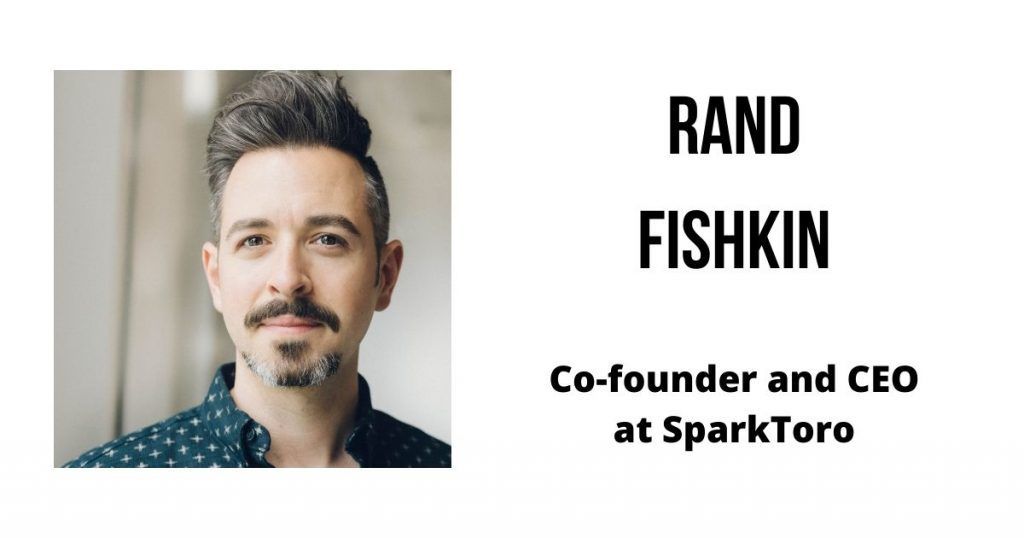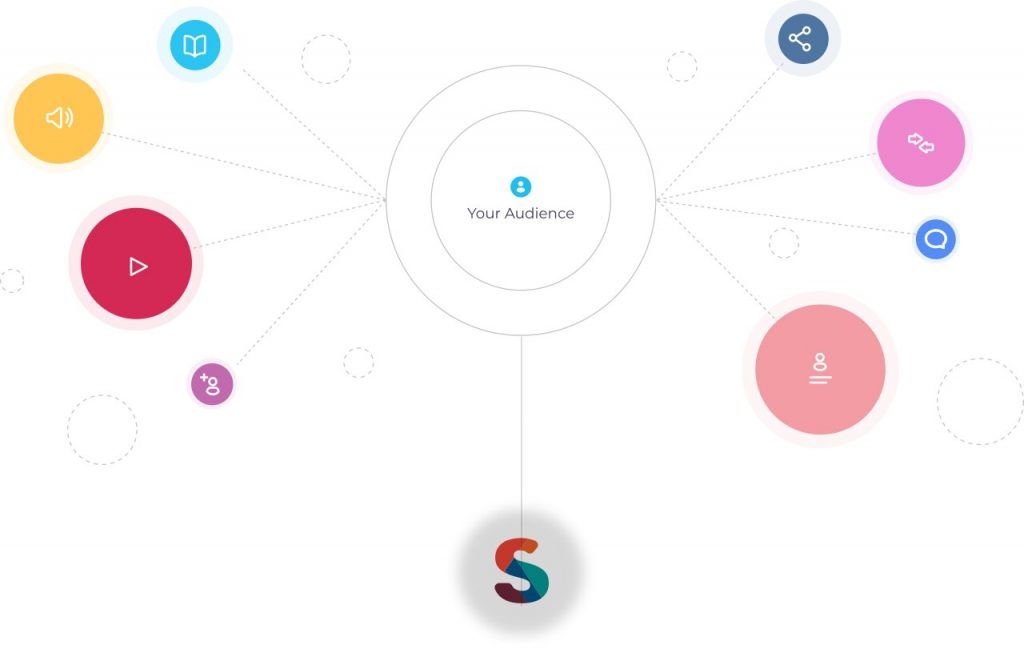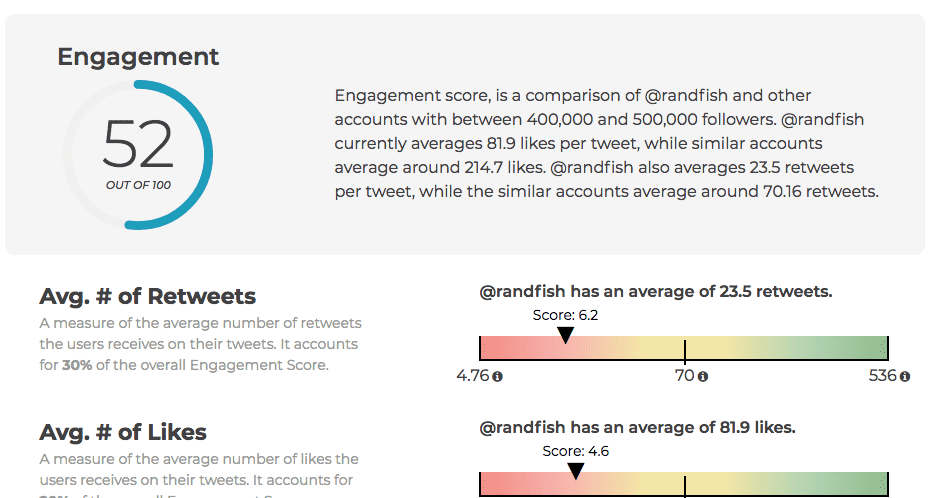Rand Fishkin doesn’t require an introduction, especially for those who’re in the SEO or digital marketing space. Not only he has created Moz, but his videos of Whiteboard Friday have also made the complex concept of SEO so easy to understand for a lot of people. He also authored the book “Lost and Founder: A Painfully Honest Field Guide to the Startup World” about his experience at Moz. Now, he has started another startup dubbed SparkToro, which can be best described as an audience intelligence tool. We caught up with him at the sidelines of the SaaS North conference to discuss his latest venture, his learnings from Moz, what he’s doing differently this time, and more.
PS: the interview has been edited for the sake of brevity.

Table of Contents
1) From focusing on search behavior to social intent, what led you to the launch of SparkToro?
He replied “my perception with my co-founder was that market research, specifically the part of market research that focuses on the behavior and the attribute at scale gathering from audiences was really broken and you know, that sounds a little technical, a little fancy. Basically, if you are trying to figure out what websites your audience visits, what podcast they listen to, what YouTube channel they subscribe to, what events they go to, what social accounts they follow, and on which network – answering that question right now is really difficult and businesses of all kinds and marketers whether they are starting new businesses or launching new products or putting out new blog posts, or just trying to sell their products, or help their clients sell products. That’s an immense challenge and many businesses don’t even try to solve it. They just throw money at Google and Facebook and let them do the targeting. We realized that the worlds of content marketing, digital PR, and all these adjacent marketing fields needed this data, and so we wanted to build something.“
2) Any learnings from founding Moz and running it over the years and bringing them to SparkToro as well?
Mr Fishkin states “I took away tons and tons of learnings from Moz, and I’m doing things very differently with SparkToro. For instance, it’s funded differently, and it’s structured differently. We’re doing hiring differently. We are doing our own marketing very differently… using a lot of the principles that we help other people with finding the right audience in order to earn attention for SparkToro. That’s the primary way that we’ve built our audience and our traffic, and gotten our first few hundred subscribers.“
3) Could you give one use case of how a company or a user would use SparkToro, and how they’ll implement that in their marketing strategy?
Illustrating an example, he said “let’s say that you have launched a new product and your goal is to reach people in the boating world. You want to reach people who own boats. Maybe you’ve got some new product for them. So you go to SparkToro, and you type in an audience that frequently talks about boating or yachts, or uses these words in their profile. You can also search for a specific site. So, you know that there’s a publication maybe called ‘Boating World’ in the United States, and so you plug in at Boating World to my audience follows the social accounting world and now you can go find people who pay attention to this publication, and perhaps have advertised in the past or even done some partnership with them and had success. They also read, listen, watch, follow, or subscribe to all of these other publications and channels and individuals. Let’s go reach out to them. And so then you pop them into a list on SparkToro, which has an integration with Hunter.io which provides email data as you get their email addresses and you drop them a line and say hey, we did some work with Boating World, I saw that you have a similar audience. We’d love to chat about getting on your podcast, or we’d love to chat about contributing a guest piece to your website, or we’d love to chat about doing a paid sponsorship of your event this year. Whatever it is, and that’s the general use case for SparkToro. Essentially, it’s a combination of digital PR and digital advertising but on the intelligence side. So that you actually know where to go if SparkToro can tell you that 3 percent of your audience that you’re interested in is listening to this podcast, and 13 percent is listening to this other one. That can help you decide that you can spend a lot more time and energy and potentially money with the one that reaches a much larger percent of your audience.“
4) Is there any specific industry that you’re targeting with SparkToro?

“SparkToro is usable across any industry. What I like to say is that if an audience has describable behavior or describable attributes that make them unique that they would use in their online profiles or using their online content and shares, then SparkToro is great. It’s good for finding real estate agents or VPs of sales or people who are in the heavy machinery industry, or people who do auto repair or audiences that are interested in boating or interested in a certain video game. But it’s not great if folks don’t have a unique describable word or phrase. For example, it’s not great for raw demographics. If you want to reach Asian men between 30 and 40 in California. We can’t help you there, for we don’t collect, store, or publish demographic data on race, age, income, or those kinds of things. So if you want to find homeowners, then SparkToro isn’t great because nobody says homeowner in their profile,” he responded.
5) Could you share some insights as to how was the experience of launching a product amidst the pandemic?
Mr Rand Fishkin mentioned “I think that the timing was very non-ideal, and if we could have launched almost any other time, we really would have. We did initially push our launch from March to April and that was essential because we just saw that in March the activity around internet marketing and digital advertising was falling off a cliff. Essentially, people were holding on to their budgets and they were worried about what the future is going to be like and all the discussion online was around the pandemic and so we decided we would push SparkToro’s launch. So we launched in April of this year. We did have about six weeks prior to that where we rolled out an early access option. We had about 15,000 email addresses on a list of folks who had subscribed over the past year and a half to SparkToro, through homepage and product page where we basically said, coming soon – put your email address if you’d like to be notified when we launched and so we rolled out a sort of Early Access. We gave folks $100 towards an account towards their first month or their first few months of an account if they signed up. We did see probably about 150 customers from that. But you could see that the first email we sent which was at the end of February that performed literally 10 times better than the ones we sent at the end of March. So, the conversion rate fell almost 90 percent over the start of the pandemic, and this was part of the reason that we pushed back the launch is because we basically knew or we’re just getting lost here. You know, folks are not paying attention folks are not taking us up.“
6) How many users do you have currently?
He stated “on an average, we get about 80 to 90 new people using the free version each day. So usually about 600 new folks trying SparkToro every week. We intentionally made our free version more robust, so we have a forever free plan that we launched within April and that was basically a result of Casey (SparkToro’s co-founder) and I recognizing that so many people in marketing around the world were in this tough economic situation because of the pandemic, and many people wouldn’t have budgets to try SparkToro out. We wanted to offer value and data and opportunity to everyone who tried the product even if they couldn’t afford to pay. They can run 10 free searches a month and then usually some people signed up. So, we are around 400 paying subscribers right now.“
7) Can you talk more about the pricing strategy for SparkToro?
Mr Fishkin told us that “we initially launched SparkToro with more expensive pricing. It was $150, $300, and $600 a month. We got little pick up at the $600 a month level, which is essentially unlimited search. We found the $300 plan worked well. I think 10 to 15 percent of our subscribers are at that level, and we do see upgrades every month from folks at the lower levels to that one. And then the $150 tier was initially our introductory pricing. We ran a survey in the summer to our customers who are paying customers and our free users and asked them a bunch of things about how they wanted to use the product and all these kinds of things. We found that there were a lot of folks who said I don’t need this many searches and as much functionality and all these kinds of things, but I would happily pay for a lower tier of SparkToro if it was available. So we launched a $50 a month plan in September as a test. It’s going pretty well. We’ve been watching it closely to see if the churn rate is too high, or if the sort of expense of running an ad and the way it takes the user away from the $150 price point is too costly then we’ll probably end the test. But so far, it’s looking good. In fact, a number of folks who’ve signed up at the $50 plan have upgraded to the $150 tier after either running out of searches or when they wanted some other feature.“

“It looks like it’s going to be something we keep for at least a few months and maybe even long-term, but the way I thought about pricing at Moz wasn’t conscientious about how valuable it was to test new pricing and to be more experimental and that’s something that I want to avoid. I’ve seen companies like Wistia for example test tons and tons of different prices or Buffer test a lot of different prices. And I don’t think it hurts you. Doing pricing tests is not a bad thing. I’m not sure why I was so afraid to do that at Moz, I thought it was too complicated and challenging for our engineering team, and too risky,” he added.
8) When we talk about social media analytics, the category has a number of players – both big and small. How do you stand out?
He explained “the challenge with SparkToro is less standing out from the competition and more helping people understand what we do, the problem that we solve, i.e. marketing the problem itself. So making sure that people are familiar with this idea that you should understand your audience and your customers and figure out what their influencers are and find the publications, and people, and podcasts, and events, and all these channels that reach your audience so that you can go do marketing of all kinds in all those places and potentially get a much higher return on than just throwing dollars at Google and Facebook advertising. That problem, especially without a name, has been quite a challenge because for whatever reason marketers, founders, and product people don’t have a word don’t have a phrase that they call this – the practice of audience intelligence with marketing intent behind it. So we’ve had to market that problem.“
“So the good part is we don’t really have a competition in the space yet. If you want to go figure out what your audience reads, watches, listens to right now, I guess our competition is really surveys,” he adds further.
9) What’s your go-to marketing strategy to reach out to potential users?
He shared that “I do most of the marketing, Casey does almost all of the coding and product side. My three tactics for marketing SparkToro have been pretty concentrated in on what we call digital PR, i.e. essentially getting on other people’s podcasts, livestreams, webinars, and events using essentially the platform and reputation that I built up at Moz to find opportunities to leverage the audiences that other folks have built. Dogfooding 101 because we’re figuring out where my audience is, and I’m talking to folks like yourself right and then doing all these events. I enjoy these conversations; I like sharing what I’ve learned and hopefully help lots of other entrepreneurs, founders, and marketers. I get a lot of emails every day and they say, I heard about you on this podcast or I watched this webinar that you did, or I was on the live stream last week and they go give SparkToro a spin because it’s free to try. Then they say that this is really valuable; this really helps me accomplish this problem and then some of them sign up for the paid version.“
“The second one is definitely content marketing. I write and publish a blog post about every week or so. Sometimes only once every two weeks, but they tend to do fairly well and attract some decent traffic. Some of those folks will try SparkToro. I also do a good deal of social media marketing both content that I produce and just around, you know topics that are of interest to my audience. So I post on social media channels about everything, from politics and culture issues to telling stories about travels to cooking. I’ve built up a reasonably strong audience on LinkedIn and Twitter, and a little bit Instagram as well. That helps me get a decent amount of traffic as well,” he explained.

Adding further, he said “the third big tactic for us is email marketing. We started with this big list of folks who said they were interested in the product and and got signed up. I think that list is almost twice as large now – ~27,000 folks who have subscribed to updates. And we’ve emailed that list maybe twice or three times since launch. It was once for the survey in the summer and then another two times in September when we launched the $50 a month package, and that email list has been very successful for us. We also have a drip email marketing that we do when you sign up for a SparkToro account. When you sign up first part to our account, you get the free version you start playing around with that. I think after you do your first one or two searches, about 24 hours later, you get an email from me that says something like can I help with your SparkToro account? And if you have a couple minutes to tell me what you’re working on, I’m happy to help and I answer those all day long every day. These emails come right to me and that’s how I have a lot of conversations with potential customers, and figure out what they’re trying to accomplish. What’s great about it is it’s not just email marketing, it’s also a product development and kind of customer research for us. It helps me understand what people are trying to do and what they feel frustrated by and what we could improve to help them. So a lot of the product improvements over the last six months or so have come from that.“
10) As a second-time founder, what are the things that have become easier for you?
“It’s definitely easier to manage the mental and emotional roller coaster of startup life. I think I’ve more perspective and maturity, and ability to sit back and recognize that there will be good days and bad days. And that’s okay, and a bad day doesn’t mean that things are terrible just means a bad day, and a great day likewise doesn’t mean that I’m not excited about it. I don’t have that same roller coaster of emotions with high highs and low lows that I did my first time around with Moz. This time is different because I’ve seen, and experienced many of the challenges before and so the frustrations, the issues that arise are not new and just a little bit of experience going through them before watching other people go through them before having helped lots of SaaS businesses in the past and seeing how the field has developed. I now have a good sense of the digital marketing world as well. Those things are hugely helpful. All these help in making better decisions. It doesn’t mean I’m always making the right ones, and I’m sure we’re messing up, but I definitely have a lot better idea of what the right thing to do is most of the time,” Mr Fishkin shared.
11) You mentioned this before; but could you explain why you’re consciously aiming to become a zebra and not a unicorn?
Rand Fishkin explained “I don’t have a problem necessarily with high growth and high intensity, if that’s what folks want to sign up for. I think the way that I think about it is when you first start a business you do not know how many opportunities you’re going to have. You don’t know how big for sure the market will be especially if you launch a new product in a new space that has been trying to solve a problem that hasn’t been solved before. That’s just a big unknown. My frustration around a lot of the startup ecosystem is that the traditional advice focuses on the idea that you have to go for a big market. You have to try and be a billion-dollar company. You have to try and acquire tons and tons of users and move as fast as you can to prevent competitors from coming in, and I don’t think any of those things are true. Unless you have to serve the Venture Capital asset class, right which is predicated on this idea of tons and tons of failures or even if they raise millions of dollars, a few people succeed. I hate that model. I don’t think any of us should want to buy into that. I think we should actively reject that and look for much higher success rate businesses because starting a company and then having it fail sucks. Let’s try and make that as small a percent of the entrepreneurial world as possible instead of a huge one. Let’s not force ourselves. I don’t think it’s a good idea. It’s not healthy. It’s not right. It doesn’t create a healthy economy. It doesn’t create healthy market competition. The incentives and Venture Capital are all investing in a hundred companies one of which hopefully becomes a billion-dollar market leader that’s also a monopoly. So it’s bad for everybody except a bunch of really rich people.“
“So instead right what I’d really like to see is a lot of folks who are struggling in whatever they’re doing now, but interested in becoming entrepreneurs, building interesting companies exciting companies that can get to I don’t care a few hundred thousand dollars, a few million dollars, a few tens of millions of dollars in revenue as faster or as low as they want and they last for a long time and they make their founders, employees, and customers happy, and that’s exactly what we should want. And that’s the opposite of venture capital. That’s the way I’m building SparkToro, and that’s how I hope to help the rest of the world. That’s what I hope to bring other entrepreneurs around to. I think this obsession with getting Venture funding, and participating in that ecosystem is really unhealthy. I would urge entrepreneurs and founders to reconsider whether and why they’re going after whether they’re why they’re chasing that Dragon. I think that most of that comes from a cultural and media ecosystem that prioritises it and we should reject it,” he added.
12) What does the future look like for SparkToro? Are you working on more features are trying to gain more users?

He shared “I think it’s a balance, right? So what I essentially work on is kind of the marketing side of things and then Casey is building new features in the background. So we have an API that we’re that we’ve finished and is being tested and some folks are trying that out. We have some a custom audiences feature where you can like upload a list a custom list of social accounts and we can analyze those instead of you know, having to search for an audience we and then we have over time tracking which we’re calling audience tracking that feature is still being worked on and probably still a few months away. But those kinds of new features, we plan to roll them out once a month for the next few months. I want to make sure that we keep SparkToro dynamic, and we keep launching new things. And I also want to make sure that we don’t take our eye off the ball of data quality and coverage. Currently, we’re very English-language centric. If you want to use SparkToro in German or Spanish or other languages, it doesn’t have great coverage in those regions. That’s something we want to improve, which means increasing are crawling of all the different social networks that we crawl. I also want to make sure that we never lose freshness. So, 120 days is the oldest data in our database and the newest is from yesterday or today. Well because it’s constantly refreshing, and the goal is to keep it about there as we expand. I don’t want to fall into this potential trap of let’s build new features and ignore the upkeep of the system. So it’s challenging.” “This is a very hard thing to do with only two Founders working on the company, but one of the things that we’ve been doing that’s really different from a lot of other companies is we use a lot of contractors, consultants, and agencies. I think we’ve worked with four agencies, and six or seven consultants and contractors. So we lean very heavily on those groups, and those people to help us with projects of all kinds. That helps us on the budget side as well as the cost control and work output. We know that we’ve paid for a certain amount of work and we’re going to get it and it tends to come from people who are really experts there,” he added.
13) What are your favourite SaaS products out there?
He told us that “the ones that we use and have been really enjoying are BaseCamp, which we use with our consultants of the CRE (Conversion rate optimization) agency. We use Hotjar, which is an analytics and heat mapping tool. We use ProfitWell, which helps you track your revenue and subscribers and that’s an exceptional product. Its free version is better than 90 percent of paid SaaS products. Then we use Wistia for the videos.“






